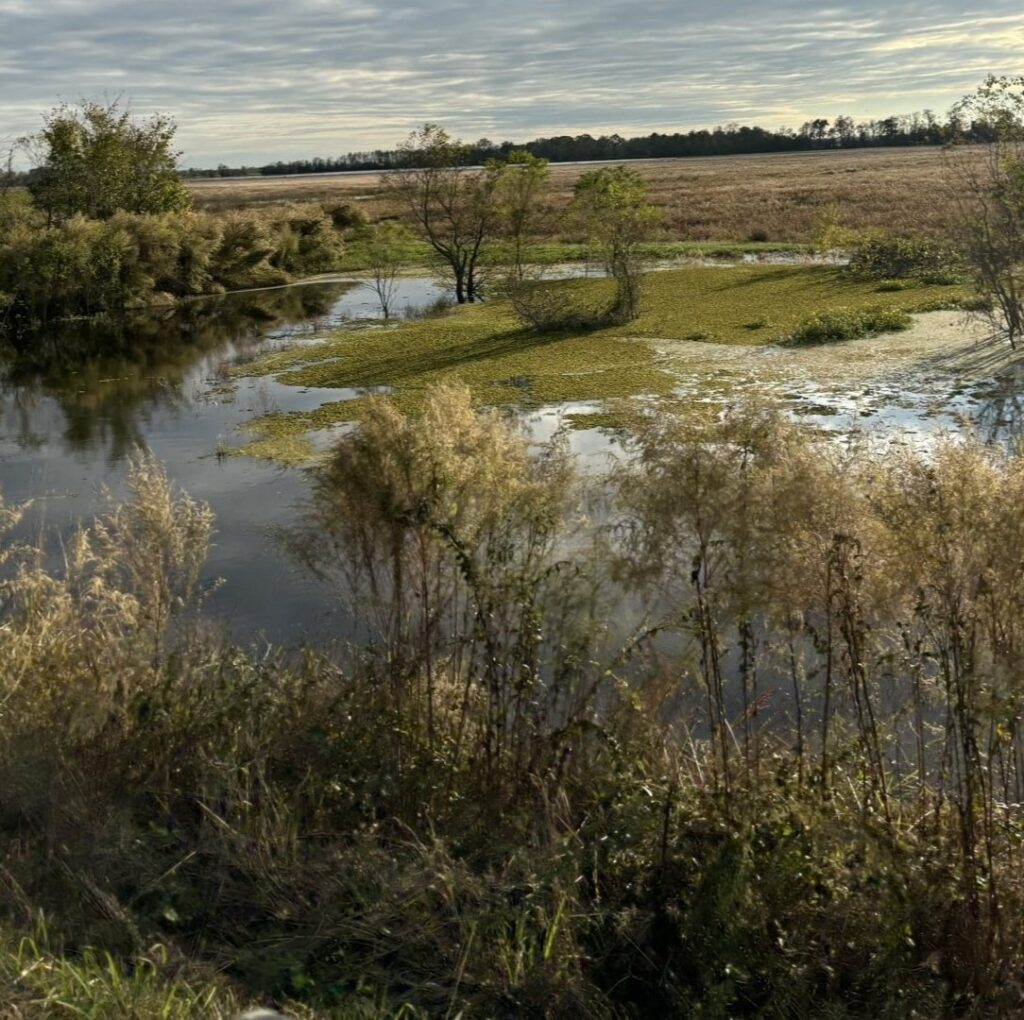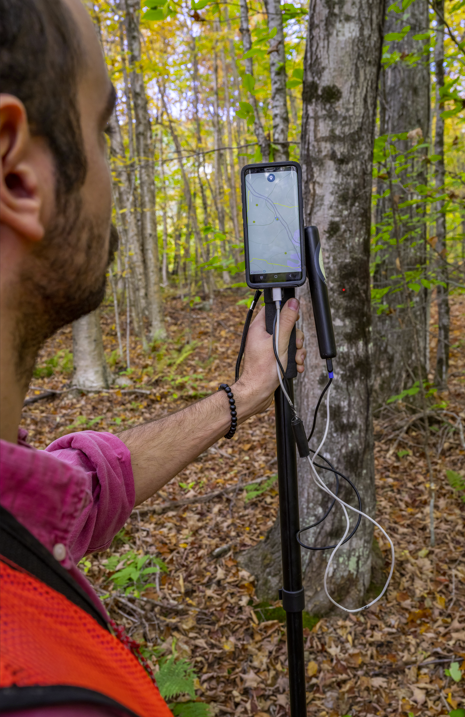Our Project
Chestnut Sustainable Restoration Project
Through our Sustainable Restoration Project, we develop new forests on marginal crop and pasture lands across the United States. We designed our project to restore diverse, natural ecosystems—improving air and water quality and supporting wildlife suitable to each site. We work with local foresters, landowners, nurseries, and specialists to plant a biodiverse array of hardwood and pine seedlings, optimized for each region’s soil, drainage, native species, and community land use. We thoughtfully design, plant, and monitor each site to ensure high survivorship.


Chestnut Sustainable Restoration project
These projects back our high-quality, removal-based carbon credits.
After five years of monitoring, we begin measurement of the carbon stocks sequestered within the trees, verifying our measurements with the rigorous verification standards of Gold Standard®. Our proprietary technology allows us to measure carbon sequestration quickly and accurately, requiring far less time and expense than traditional methods.
We’re committed to the durability of our developments. Chestnut Carbon stands behind the durability of our projects in our ownership of afforested lands, and relies on best practices in forestry management to mitigate potential risks from fire, disease and other issues.
Our Sustainable Restoration Project: Snapshot of Land Parcels (30 and counting)
Fourche La Fave River Ranch
Yell and Scott Counties, Arkansas
Acres purchased: 456
Acreage for afforestation: 271
Harding-Freed-Dickson Farm
Conway County, Arkansas
Acres purchased: 1,539
Acreage for afforestation: 1,518
SWLA – Donald, DeWolff, & Watkins
Jefferson Davis Parish, Louisiana
Acres purchased: 4,041
Acreage for afforestation: 3,358

Gold Standard for the Global Goals®
The Gold Standard® is the leading certification program for voluntary carbon-offset projects that measures, reports, and tracks the benefits of climate and development interventions. These standards, established under the Paris Climate Agreement and the United Nations Sustainable Development Goals, help to quantify the social, economic, and environmental benefits of each program.

The Gold Standard Difference
Chestnut has chosen to partner with Gold Standard® for our afforestation crediting process, as we believe they have the most rigorous and comprehensive verification program available today.
Gold Standard® takes a unique approach to land use activities that sequester carbon or avoid GHG emissions, focusing only on mechanisms that can deliver a high level of environmental integrity.
To ensure environmental integrity, Gold Standard® does not issue carbon credits for REDD+ projects because of concerns about environmental integrity, including the ability to control leakage (when deforestation activities simply move to another area) and risks for overestimation of credits due to baseline uncertainty.
Environmental integrity encompasses numerous factors, including conservative accounting, avoiding leakage, and ensuring permanence.
Conservative accounting
Avoids risks for overestimation of credits due to baseline uncertainty.
Avoiding leakage
Gold Standard® rules for forestry projects explicitly ensure projects don’t cut down trees to make room for new plantations.
Ensuring permanence
Gold Standard® requires a fixed 20% contribution for a pooled compliance buffer, which, unlike other standards, remains untouched even after the crediting period of the project. This further reduces the risk of reversal and impermanence.
Gold Standard® is the only credit issuer to include Safeguarding Principles in its verification process.
These Safeguarding Principles work to protect the community by assesses potential environmental and social impacts and implementing mitigation measures where necessary.
For land use activities, this means following safeguarding principles that protect water resources, soil erosion and degradation, access to food, livestock wellbeing, and areas with a high conservation value.

Forest Stewardship Council®
The Forest Stewardship Council (FSC®) is a global nonprofit leader in sustainable forestry that is trusted by NGOs, businesses, and consumers to protect healthy, resilient forests for all, forever.
FSC® operates the world’s most rigorous, trusted forest certification system. Its “check tree” label, found on millions of products worldwide, verifies sustainable forest land management.

Quality
We’re committed to responsible afforestation at scale, certified to the highest standards. Responsibility means creating value for rural communities and native ecosystems alike.
Quality starts with the right project design
We’re committed to responsible afforestation at scale, certified to the highest standards. Responsibility means creating value for rural communities and native ecosystems alike. We work with regional experts to design a custom plan for each land development, ensuring the highest quality of the end product – the forest we’re building.
- Optimizing our seedling planting based on local soil, native species, water availability and other factors.
- Utilizing data models that predict growth patterns and duration by species, ensuring our forests deliver the expected carbon removal credits.
- Mitigating risks based on the local environment and ecosystem, including planting non-contiguous parcels to avoid fire and disease risk, planting biodiverse species, and planning for local wildlife.
- Engaging local stakeholders: We engage local experts and communities to inform them of our development plans and seek their input and partnership. We ensure co-benefits to the community that only nature-based solutions enable.
The Result
Climate action is only part of the story.
Our projects will benefit rural communities, increase biodiversity, and support regional economies. We measure these outcomes against the standards set by the United Nations Sustainable Development Goals for the planet.

Forest restoration across the United States, starting in the Southeast
Since its founding in 2022, Chestnut has planted over 17,000,000 trees on over 30,000 acres in the Southeastern U.S. The Chestnut Sustainable Restoration Project now covers more than twice the area of New York’s Manhattan Island in total.
Beyond Planting Trees
We augment our projects with special activities to improve long-term outcomes.
We work closely with the local communities and forestry experts to create the healthiest and most ecologically sound planting strategy. Beyond that, we look to deliver a variety of benefits to the community and environment.
Ecological Resilience
Activities designed to help control fire, pests, and invasive species through sustainable plantation design, quality growing stock, and matching tree species to soil conditions. Each project establishes an advisory committee to inform planting decisions and encourage ecological resilience.
Growing Markets
Activities support nursery operations and the production of native seeds and seedlings, which will benefit local suppliers and third-party buyers.
Public Education
Activities include workshops, public partnerships, and signage related to community experiences in forest establishment/management. Sales proceeds will help to subsidize regional educational outreach on sustainable grazing and agricultural practices.
Environmental Protection
Activities help to enact restrictive easements on the land, prohibiting illegal uses and protecting water quality. Project lands are certified to the Forest Stewardship Council® (FSC-C180518) to assure environmental protection.
Public Use
Activities help to create access to certain sections of planted lands for public enjoyment–hiking, hunting, fishing. Working with public partners, the project plans to establish trail systems and help finance the long-term costs of trail maintenance.
Special Use
Activities help to promote traditional, cultural, and native uses through the identification and protection of designated areas. The project will map and maintain these critical sites for the benefit of local people and threatened species, following the requirements of the Forest Stewardship Council®.
Other Activities
The project includes additional activities that promote the highest and best use of lands through capital investments in otherwise unproductive systems. Further, Chestnut Carbon is committed to employment activities that benefit local works and local economies.

Safeguarding Principles, Mitigating Risk
We support the principles of the nonprofit Forest Stewardship Council (FSC®) to protect people and the environment. FSC®, a global leader in sustainable forestry, manages the world’s most rigorous and trusted forest-certification program.
Chestnut’s projects adhere to best practices for water conservation–prohibiting obstruction of water flow, limiting use of surface water, and preventing wastewater discharge. We also work continuously with stakeholders to mitigate potential risk.

Potential Risks
Higher property prices and rents
Issue:
- Land values may rise, driven by competition for acreage and the reforesting project’s value creation
- May affect lands that could be used for grazing or farming
- Converting pastureland or farmland to new forests for carbon sequestration may come to be the considered the highest and best use for acreage
- May further affect prices for agricultural land
Mitigation:
- Chestnut’s policies limit acquisitions to marginal and unproductive lands
- We pay no more than market price, based on comparable sales data
- We avoid concentrating acquisitions in a single area
Limited use of public land
Issue:
- Chestnut buys some land from third parties that have historically limited public access
- Existing restrictions may continue to exclude the public
Mitigation:
- Chestnut is committed to working with public agencies to transfer ownership of lands for permanent public benefit
- We seek to leverage Clean Water State Revolving Funds (CWSRF) and public conservation easement programs to ensure public access
Wildfires
Issue:
- Wildfires can post an ongoing risk to forests and the communities that live within them
- Newly planted lands and adjacent forestlands may face exacerbated fire intensity
Mitigation:
- Chestnut designs and maintains healthy forests through careful planting of diverse tree species appropriate to each area
- We avoid monoculture pine in favor of diverse, fire-resilient hardwood species
- We use FSC-certified management plans, which incorporate thinning, treatment for fuel reduction, and establishment of fire breaks
Decreased livestock and crop production
Issue:
- Transitioning lands to forest carbon sequestration may threaten local livelihoods in ranching and agriculture
Mitigation:
- Chestnut restricts purchases to unproductive acreage to minimize any economic effects on ranching and agriculture
- We’re committed to employing local workers to support each project
Loss of cultural identity
Issue:
- Converting lands from bucolic pastures and farmland to forests may be highly visible, contributing to a communal sense of identity loss as ranchers and farmers
Mitigation:
- Chestnut’s projects are designed to support community well-being and inclusiveness
- We plan to disburse forestlands across the Southeast and across the U.S. to avoid concentrating activities in any one community
- We’re committed to being good stewards, good citizens, and responsive partners
Community displacement
Issue:
- Restoring land to forest may displace people whose livelihoods depend on prior non-forest land uses.
Mitigation:
- We solicit information about tenants who may be displaced from sellers
- We track the prevalence of displacement using the information from provided by sellers
- We are committed to working with displaced tenants who request access to livelihood-related assistance

Contribute to the project as a key stakeholder.
We seek stakeholder input in project design and other areas, and offer several ways to get involved.